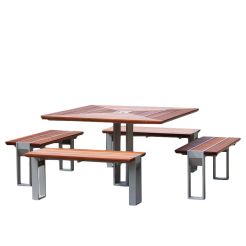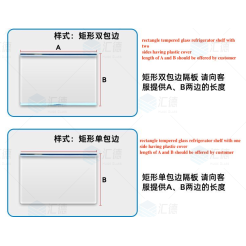Combine harvester 4LZ-9A(4G) Factory
Combine harvester 4LZ-9A(4G) with 3.4 meters grain unloading height and the inner diameters of the vertical and horizontal unloading cylinders are enlarged to 300mm and 260mm respectively, making the unloading more efficient.
Product Description
Combine harvester 4LZ-9A(4G)
Technical Feature:
1.The unloading height is 3.4 meters, the inner diameter of the unloading vertical cylinder and the horizontal cylinder are enlarged to 300mm and 260mm respectively, which makes the unloading more efficient.
2.The overall height and length of the granary is increased. 350L fuel tank, long operating time.
3.The upgraded intermediate shaft, roller shaft, bridge driving shaft and other key parts have strong load-bearing capacity and long durability.
4.The transmission belt adopts a black toothed belt, which has high transmission efficiency, strong tension, good heat dissipation, no slipping, and no speed drop. The cutting table returns to its original position with one button, and the cutting height adjustment is more convenient.
5.10-inch display, newly added engine image monitoring.
Technical Specification:
|
Model Number |
4LZ-9A(4G) |
|
Size(mm) |
6700×3390×3380 |
|
Engine Powder (PS) |
190/175 |
|
Feeding in speed |
9kg/s |
|
Swath (mm) |
2750/2560 |
|
Operating efficiency (hm2/h) |
0.6-1.3 |
|
Box volume(m³) |
2.6 |
|
Wheel track (mm) |
1900/1800 |
|
Unloading height (mm) |
3400 |
|
Threshing pattern |
Tangential flow+Horizontal axial flow |
Common faults:
Causes of faults
There are two main causes of combined harvester failures: one is accidental failures caused by improper operation, which is man-made and generally easy to avoid and prevent. The other is sudden failures caused by excessive wear of certain parts of the machine during long-term use, which is caused by natural wear. As long as active preventive measures are taken during use, the probability of failure can be avoided and reduced. The following are several typical causes of failures and prevention methods.
Blade damage
Hard objects such as stones and tree roots are encountered during cutting; the blade guard is loose or deformed, causing the fixed blade to be inconsistent in height; the blade rivets are loose and collide during cutting, etc., which may cause the cutting blade to be damaged. To prevent blade damage, pay attention to obstacles in front of the cutter during operation to prevent the blade from cutting hard objects such as wire, or colliding with stones, poles, stakes, etc. During maintenance, check and adjust the blade guard frequently to keep the fixed blade in the same horizontal plane, and rivet the loose blade in time.
Broken blade
Mainly because the resistance of the cutter movement is too large or the installation position of the cutter drive mechanism is incorrect. To prevent the blade from breaking, the cutter should be adjusted correctly to reduce the resistance of the blade movement, and the installation position of the blade drive mechanism should be adjusted to meet the assembly requirements. After the blade breaks, the spare blade should be replaced and the broken blade should be repaired. After the wheat harvest, the removed blade should be placed on a flat rack in the warehouse or hung vertically on the beam in the warehouse to prevent the blade from bending and deforming.
Spiral slippage
The gap between the spiral blade of the pusher and the bottom plate of the header is too large, especially when harvesting sparse and short wheat, the blade cannot catch the harvested crops and cannot be transported in time, and accumulates and blocks in front of the pusher, causing the header spiral pusher to slip. To prevent this fault from occurring, the gap between the spiral blade and the header box should be correctly adjusted according to the density, height and other conditions of the crop; when the blade edge is polished, the pushing efficiency will be reduced, and small teeth can be processed with a flat shovel or file to improve its grasping and pushing capabilities.
Drum blockage
The crop is too wet, too dense, and there are many weeds; the walking speed is too fast; the threshing gap is small, or the drum speed is low; the transmission belt slips; the engine horsepower is insufficient; the draft wheel and the draft remover slip and do not turn; the feeding is uneven, etc. can all cause the drum to be blocked. In order to prevent the drum from being blocked, when harvesting weedy and wet crops, the gap between the drum and the concave plate should be increased appropriately; when the drum speed drops, the locomotive should be slowed down or stopped temporarily; the tightness of the transmission belt should be adjusted; the speed of the drum and the gap of the wooden bearing of the draft remover should be adjusted correctly. If the drum is blocked, the engine should be turned off, the concave plate should be placed in the lowest position, and the drum belt should be turned to remove the blockage.
Drum is not clean
It is mainly due to the low drum speed, the large concave plate gap, the excessive crop feeding amount or uneven feeding; the nail teeth, the grain rods and the concave plate bars are excessively worn, the threshing capacity is reduced, or the concave plate is deformed, resulting in incomplete threshing; the harvest time is too early, the crop is too wet, and the threshing is difficult, resulting in incomplete threshing. For the above faults, the drum speed can be increased, the concave plate gap can be reduced, or the forward speed of the combine harvester can be reduced; the spike teeth, ribs, and concave plates can be replaced; the drum speed can be appropriately increased and the feed amount can be reduced to improve the threshing rate.
Screen surface blockage
It is mainly because the threshing device is improperly adjusted, there are too many broken stems, and the fan cannot blow away the threshing material, so that the front screen holes are "blocked" by broken stems and ears, causing the pusher to be overloaded or blocked; the cleaning device is improperly adjusted, the screen opening is small, the air volume is small, the wind direction is improperly adjusted, the screen amplitude is insufficient or the inclination is incorrect, resulting in more grains in the screen surface discharge, and the cleaning loss increases; the crop is wet or there are too many weeds, resulting in a decrease in cleanliness. For the above faults, the feed amount should be appropriately reduced, the drum speed should be reduced, or the threshing gap should be appropriately increased, the air volume and wind direction should be increased, and the screen surface gap should be adjusted to improve the blockage of the screen surface and the pusher; adjust the screen opening and air volume; change the inclination of the tail screen, increase the drum speed, etc.
Chain breakage
The chain is not tight enough; the chain is worn unevenly; the transmission shaft is bent, causing the sprocket to swing; the chain is used after being severely worn; the sprocket wear exceeds the allowable limit; the sleeve roller chain cotter pin is worn off or the joint clip is installed in the opposite direction; the hook chain is severely worn or installed in the opposite direction, which will cause the chain to fall off, break or disengage. To prevent this fault from occurring, the sprockets in the same transmission circuit must be in the same rotation plane; the chain wear must be checked regularly, and repaired and replaced in time; the chain joint cotter pin must be checked regularly, and replaced when necessary; the bent transmission shaft must be straightened so that the sprocket does not exceed the allowable swing when rotating; the chain tension must be adjusted correctly; the sprocket that exceeds the wear limit must be repaired and replaced in time, and the safety clutch must be adjusted correctly; the transmission chain must be lubricated in time.
Starting fault
(1) Unable to start. Use a multimeter or test bulb to check whether there is a 12V voltage between the starter motor terminals. If there is, it means that the starter motor is not faulty. If not, the starter switch is faulty and should be repaired or replaced.
(2) Weak start. Poor contact between the battery poles (called virtual connection) or insufficient battery power will cause weak start. The poles should be tightened or charged, and the light system switch or horn switch should be turned on. If the light brightness is normal and the horn sound is normal, then the power is sufficient, otherwise the power is insufficient. The way to determine whether the pole is virtual is to start the engine and then touch the pole with your hand. If the pole is hot, it means it is virtual.
Charging failure
(1) No charging. Failure to charge may be caused by a fault in the regulator or generator. The way to determine is to start the engine, and in the idle state, use a wire (body) to short-circuit the power supply and magnetic field ends of the regulator to see the reaction of the ammeter. If there is no change, you can slowly increase the throttle to increase the speed. If there is a charging current, it means that the regulator is damaged and should be replaced; if there is still no reaction, it means that the generator is damaged and should be repaired or replaced.
(2) The charging current is too large. The normal working state of the ammeter should be that the charging current is large when just starting, but the needle indication gradually returns to normal after a few minutes. If the charging current indicated is too large for a long time, it means that the regulator is damaged and should be replaced with a new one.
Instrument failure
(1) The light does not light up. If the light does not light up, it is probably because the fuse is blown. If the fuse is intact, check the bulb and wire connector.
(2) The indicator instrument has no indication. If the instrument has no indication, you can turn on the power and short-circuit the corresponding sensor. If the instrument has an indication, it means the sensor is damaged; if there is still no indication, the instrument is damaged and should be replaced with a new one.
(3) The indication does not return to the position. When the power is turned on, the instrument indicates the highest position. When the engine is running, the pointer cannot return to the normal indication. Disconnect the sensor. If the instrument indication can return to zero, it means the sensor is short-circuited and should be replaced with a new one; if the instrument indication still cannot return to zero when the sensor is disconnected, it means the instrument is damaged.









